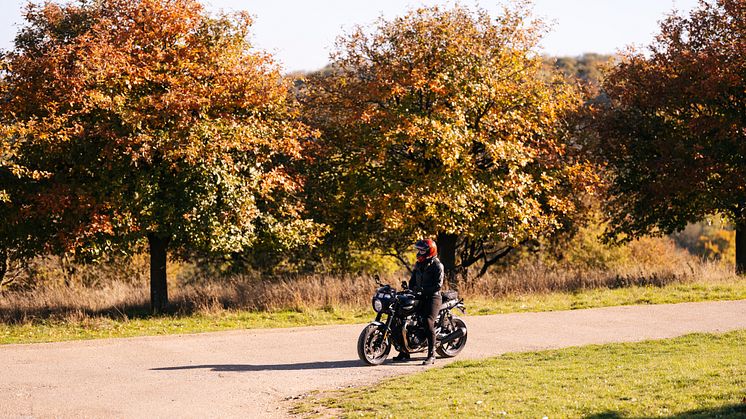
News -
Prepare Your Motorcycle for the Colder Months: Essential Maintenance Tips for a Smooth Ride
With the arrival of colder and wetter weather, most riders decide now is the time to hang up their helmets and stop using their bikes throughout late autumn and winter. However, it isn’t as simple as just not riding a motorcycle; that's why IAM RoadSmart has pulled together some top tips on how to store your motorcycle safely. Richard Gladman, Chief Examiner at IAM RoadSmart, has put together some top tips on how to make sure your bike will be ready for action when drier and brighter weather rolls around.
Make sure it’s clean.
Before you store and cover your bike, it’s important to give it a thorough clean and always remember to dry it off completely. It’s also wise to apply a spray-on anti-corrosion protectant or dispersant to all the exposed metal areas to prevent any dampness. It’s vital to re-grease any moving parts, such as cables, that have been cleaned of their lubricant to ensure they are in working order next time you come to ride your bike. If you have an EV motorcycle and don’t intend to drive it over the colder months, please consult your manufacturer’s handbook for further advice.
Look after the battery.
Batteries really don’t like the cold, so if they’re left unused for any prolonged period, they will start to go flat. Flat batteries remain the number one cause for recovery services during winter, so to avoid this, you should either remove the battery entirely and store it in a warm place (please note: alarms and immobilisers won’t work without the battery), or you can use an optimiser to keep the battery levels topped up.
Check the liquids before winter.
The liquid parts of a bike (e.g., fuel and brake fluid) are just as vulnerable to winter conditions as metal surfaces. Brake fluids can attract damp, which can create air bubbles in the system when using the brakes. Did you know fuel can degrade? One being the octane level reduces overtime, which will affect performance; the other being that while standing, fuel can become gum-like and clog the system. Special additives are available on the market to help prevent this from happening. If you are storing your bike for some time, ideally drain the fuel out of the tank and fuel system.
Prepare your bike’s tyres for storage over winter.
Your bike’s tyres may suffer if left stationary over prolonged periods, but a top tip is to check the pressure periodically and rotate the wheels slightly; this will help them keep their shape when not in use. It’s always recommended that both wheels should be lifted off the ground by either using the bike’s main stand or two paddock stands. If this isn’t possible, simply place a piece of carpet under the bike or blocks of wood under each wheel to prevent contact with the cold floor.
Find a home.
To keep your bike in tip-top condition this winter, store it indoors, in a garage or shed. This will prevent the cold and damp damaging your bike, but don’t just dump it and leave it. Try to make sure your bike is away from a window, as sunlight can fade the paint. If you’re limited on space indoors, you can use a bike cover, and if you do choose to use your bike, you will need to clean it frequently and maintain it, or you might find your motorcycle won’t come out the same quality as it went in.
Richard said, “If you do not intend to ride through the winter, it’s important to give your bike the best chance of survival by making it ready for the winter. With the advent of E10 fuel, there are some concerns that it will deteriorate even more than usual if left for a long period, so consider draining it completely if you can. If you do intend to ride, it may be worth investing in a bike-specific protection spray that will help fight the effect of salt. At the very least, make sure you rinse the bike after every ride and clean it properly as often as you can. Of course, we may get days when it’s possible to ride during the winter with a smile, and to that end, I’ll be keeping my bike clean but ready to go.”


